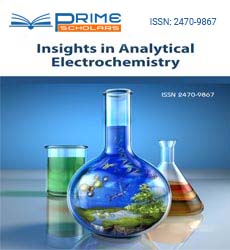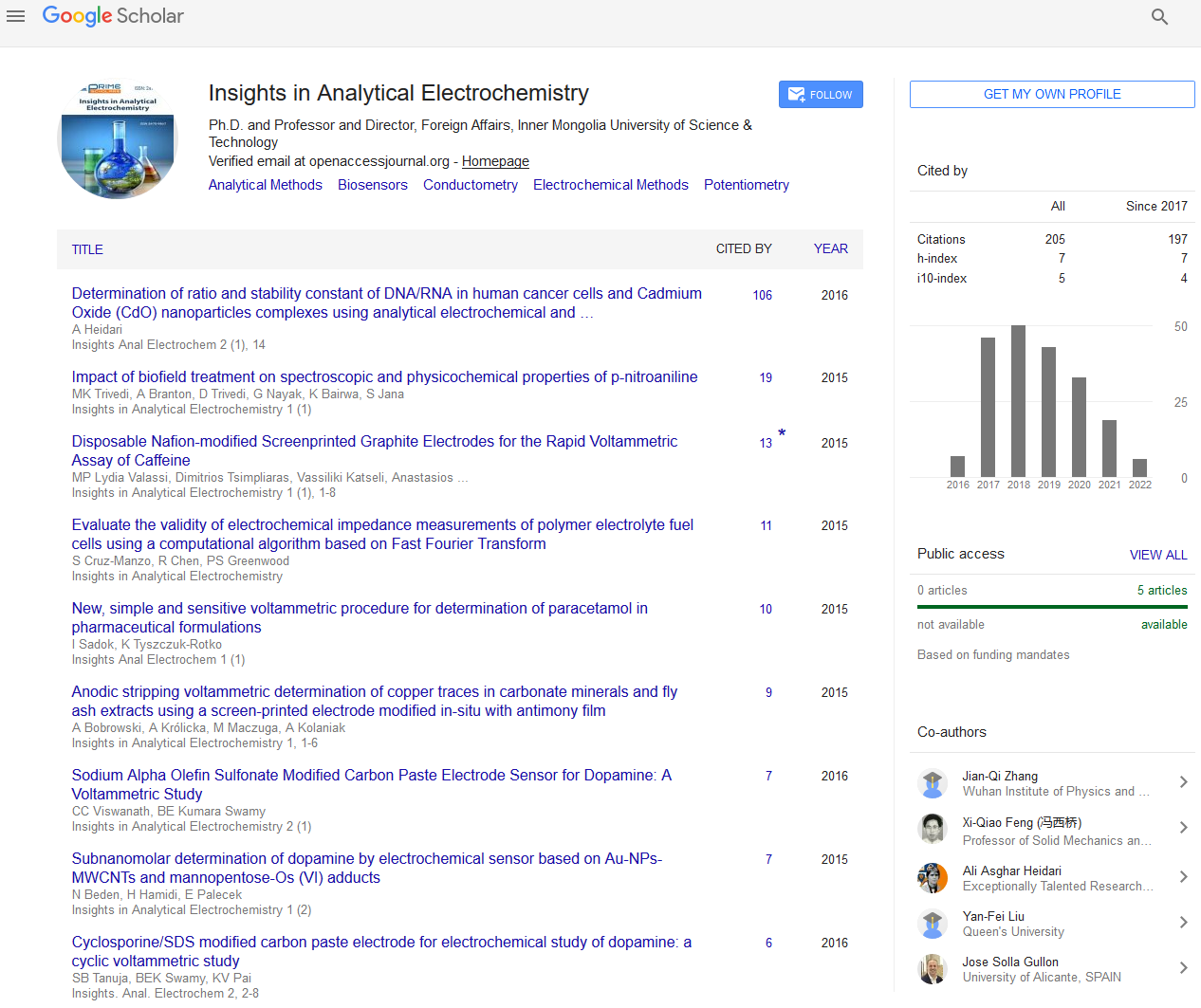Short Communication - (2023) Volume 9, Issue 1
Nanobiosensors Design Using 2D Materials: From Current Work to Future Perspective
Steven John*
Department of Nanochemistry, Case Western Reserve University, USA
*Correspondence:
Steven John,
Department of Nanochemistry, Case Western Reserve University,
USA,
Email:
Received: 02-Jan-2023, Manuscript No. IPAEI-23-15637;
Editor assigned: 04-Jan-2023, Pre QC No. IPAEI-23-15637 (PQ);
Reviewed: 18-Jan-2023, QC No. IPAEI-23-15637;
Revised: 23-Jan-2023, Manuscript No. IPAEI-23-15637 (R);
Published:
30-Jan-2023, DOI: 10.21767/2470-9867-9.1.01
INTRODUCTION
In a biosensor, the bioreceptor is intended to cooperate with
the particular analyte important to deliver a result quantifiable
by the transducer. High selectivity for the analyte among
a lattice of other synthetic or natural parts is a critical necessity
of the bioreceptor. While the kind of biomolecule utilized can
change generally, biosensors can be characterized by normal
sorts of bioreceptor cooperations including: Nutralizer/antigen,
chemicals/ligands, nucleic acids/DNA, cell structures/cells,
or biomimetic materials. There are fundamental highlights that
an ideal nanobiosensor ought to have for exact and delicate
judgments. Linearity should be sufficiently wide to recognize
high analyte focuses. It ought to be adequately delicate relying
upon the analyte focus showing high selectivity to get dependable
outcomes. An opportunity to accomplish 95% of the
complete reaction ought to be pretty much as short as could
really be expected. Properties, like biocompatibility, security at
common capacity conditions, and solidness, additionally add
to the high particularity of nanobiosensors toward the analyte.
Description
Nanobiosensors of nanobiosensors, which were utilized for the
analysis of different irresistible and lethal illnesses. should be
particular and unreasonable of any actual variables, like disturbance,
pH, and so forth. Moreover, the nanobiosensor planned
as an expendable detecting stage is one more significant component
that draws in clients for on location examination [1]. Here,
the 2D material-based nanobiosensors, particularly graphitic
carbon nitride, graphene, dark phosphorous, and MXenes, will
be examined individually, which has been utilized in the development.
Fluorescent immunoassays and ELISA are performed
by marking antigens/antibodies with fluorescent moieties or
catalysts. Aside from this, microfluidic-based antigen-neutralizer recognition strategies were created without naming and in
light of changes in refractive record or current or capacitance
[2]. They fostered an optical microfluidic stage in light of the
rule of limited plasmon reverberation, where gold nanorods
are covered on a glass substrate by a two-step manufacture
cycle of maskless lithography and gold electrodeposition [3].
At the point when antigen-neutralizer restricting happens, the
neighbourhood refractive file changes, and this change can
cause a nearby surface plasmon reverberation frequency top
shift of the gold nanorods, and the immune response focus
can be evaluated by estimating the frequency shift of the LSPR
top situation on the substrate. The cycle can be finished in 30
min with a LOD of 0.08 ng/mL, and the chip creation is quick,
straightforward, and economical for huge scope age. They proposed
one more optical microfluidic stage in light of refractive
file, which consolidated a photonic ring resonator sensor chip
with a plastic micro pillar card to identify RBD-explicit antibodies,
and quantitative outcomes are accessible in 3 min [4].
Conclusion
A vital innovation in fostering the amperometric protein biosensors
is the means by which well the compounds are joined
to the outer layer of the terminals. The presentation of the
compound biosensors is overwhelmed by the blend method
of these two parts. In additional clarification, the awareness
and dynamic not entirely settled by the proficiency that the
electronic sign because of enzymatic recognition moves to the
electron gatherer (cathode). This method is frequently called
“protein immobilization.” Here, compound immobilization science
for biosensors is portrayed. There are various applications
in different fields, for example, water quality observing, food
test examination, medication and medication examination, glucose
recognition, pollution in water and soil, and DNA-based
sensors.
Acknowledgement
None.
Conflict of Interest
The author’s declared that they have no conflict of interest.
References
- Masoud N, Lucio A (2022) Electrochemical nanobiosensors equipped with peptides: A review. Mikrochim Acta. 189(3):94.
[Crossref] [Google Scholar] [PubMed]
- Mahtab R, Fulden UK, Masoud K, Shekoufeh M, Saman S, et al. (2022) Nanobiosensors for detection of opioids: A review of latest advancements. Eur J Pharm Biopharm. 179:79-94.
[Crossref] [Google Scholar] [PubMed]
- Longyi C, Eugene H, Jin Z (2018) Fluorescent nanobiosensors for sensing glucose. Sensors. 18(5):1440.
[Crossref] [Google Scholar] [PubMed]
- Majid S, Sara HH, Reza HA, Anwarul H, Farnoosh A, et al. (2020) Plasmonic and chiroplasmonic nanobiosensors based on gold nanoparticles. Talanta. 212:120782.
[Crossref] [Google Scholar] [PubMed]
Citation: John S (2023) Nanobiosensors Design Using 2D Materials: From Current Work to Future Perspective. Insights Anal Electrochem. 9:01.
Copyright: © 2023 John S. This is an open-access article distributed under the terms of the Creative Commons Attribution License, which permits unrestricted use, distribution, and reproduction in any medium, provided the original author and source are credited.

